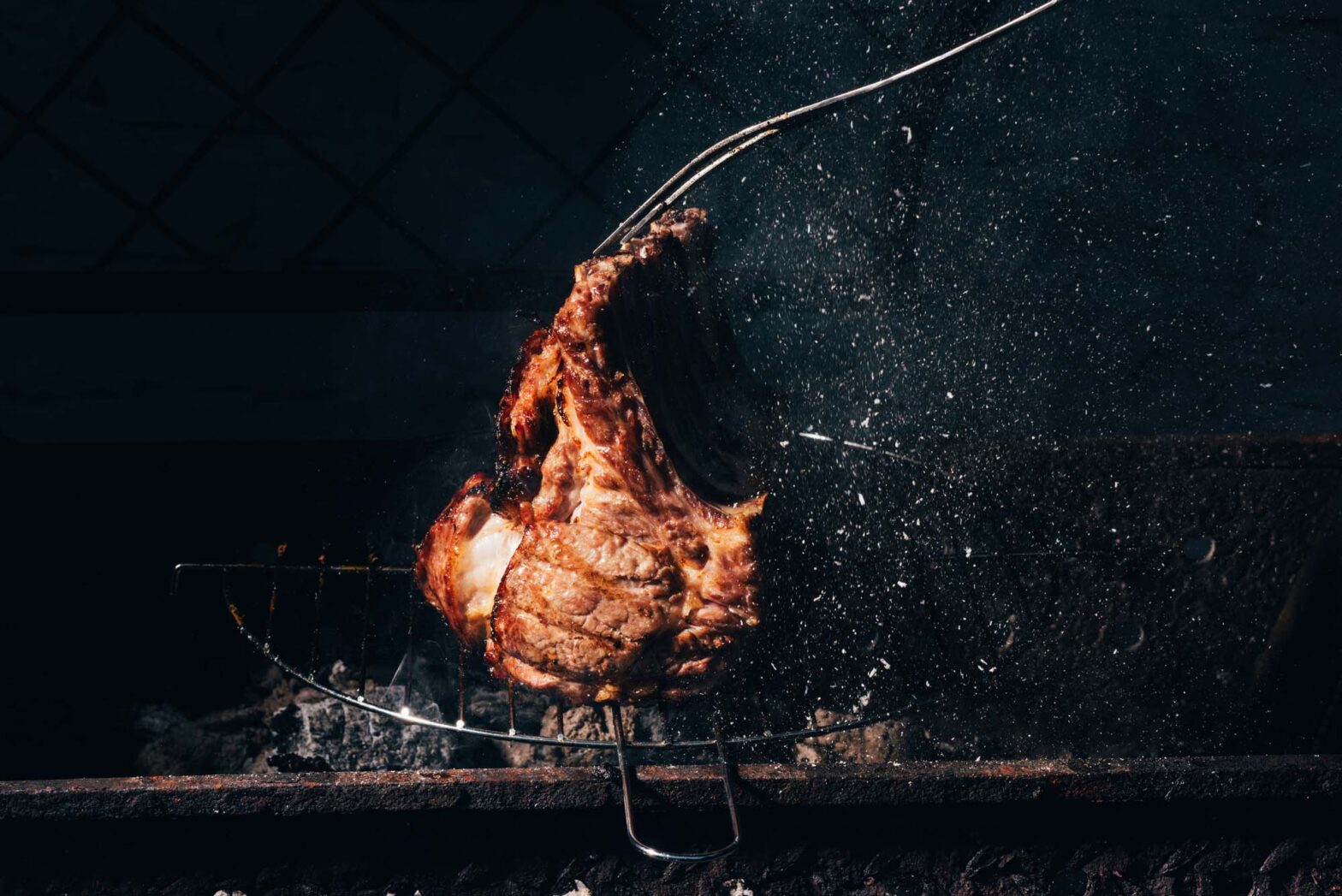When a distant cousin or a fellow dad on grill duty asks me if meat should be brought to room temperature before grilling, my answer is a clear and resounding “Yes… as long as you do it right.”
Bringing your steaks, pork chops, or chicken breasts to room temperature before slapping them on the hot grill will give them a chance to cook faster and more evenly.
After all, grilling is a dry-heat cooking method in which heat is transferred from glowing coals, smoldering wood, or lighted burners to the surface of the food that’s being cooked.
This transfer occurs by radiation if you grill with the lid open, and by radiation plus convection if you grill with the lid closed. It can also be direct if you place the food over the heat source, or indirect if you place the food near—but not over—the heat source.
The high heat makes the meat sizzle on the outside as it slowly but surely penetrates it on the inside and causes its internal temperature to rise. Fats and juices turn to drippings as they vaporize and escape through evaporative cooling.
A crispy, golden brown, deeply flavorsome crust forms thanks to browning, a.k.a. the Maillard reaction. Meanwhile, the proteins underneath stiffen and turn gray on red meat and white on poultry.
Eventually, the internal temperature of the meat reaches the USDA-recommended minimum for safe consumption: 145°F for beef, pork, and lamb; 165°F for chicken, turkey, and game birds. That’s when you know when the meat is ready to rest for a few minutes, carve up, and send to the table.
Ah, the great wonders of grilling!
All of these, as you can probably guess by now, are aided by the fact that you’ve brought the meat to room temperature before grilling.
When the temperatures on the inside and the outside of the meat have been evened out, the meat cooks faster. It loses less moisture, so it turns out juicer. And the crust doesn’t burn by the time the meat cooks through.
How to Bring Meat to Room Temperature
Leaving meat out for long periods of time makes it unsafe to eat because pathogenic bacteria—the kind that can give you, the family, and the neighbors food poisoning—grows to dangerous levels on the surface.
So much so that the folks at the USDA have dubbed the temperature range from 40°F to 140°F the danger zone. Exposed to it, the pathogens start feeding on the meat and replicating, doubling their population every 20 minutes.
In a matter of hours, dozens of pathogens become thousands. And, although heat does kill the majority of them, it doesn’t inactivate the poisonous toxins that they leave behind.
For safety reasons, meat should never be left out for more than 2 hours. On sultry summer days, when the outside temperature is 90°F and higher, that time is reduced to 1 hour.
The good news is that it doesn’t take long to bring refrigerated meat to room temperature. Simply remove those steaks, chops, or breasts from the fridge and leave them out for 15-20 minutes, in the shade and covered with foil or paper, before putting them on the grill.
What About Frozen Meat?
When it comes to the question of whether or not meat should be grilled from frozen, one thing’s for sure: It’s one of those hotly debated issues that will never be fully resolved.
Thick cuts of meat should always be thawed, without compromise, or they will char to oblivion by the time they cook through. Thin cuts less so, though the result will undoubtedly be better when they’ve been properly thawed and brought to room temperature.
The safest way to thaw meat is to transfer it from the freezer to the fridge a day or two before you plan to grill it. Thin cuts thaw quickly and thick cuts take time; plan your cookout accordingly.
The second-safest way is to seal it in a ziplock bag and submerge it in a bowl of ice water, adding ice to the water every 20-30 minutes. Within a few hours, the meat will be thawed—and should be cooked immediately.
The microwave is always an option, if undesirable. More often than not, it ends up cooking the meat and causing it to come out dry and gummy. And, let’s be honest, nobody likes their steak to be as chewable as the leather belt on their waist.

